Costner's monologue continues:
. . . and [the bullet] continues into Connally's body at the rear of his right armpit -- wound number three.
Correct.
Then, the bullet heads downward at an angle of 27 degrees, shattering Connally's fifth rib . . .
The most current research, that of Dale Myers, estimates the downward trajectory at about 24.8 degrees on an anatomically erect model, with a right-to-left trajectory of about 26.2 degrees. As can be seen in photographs of the limousine (see for example Exhibit J) this is consistent with the relative positions of the President and Governor Connally.
. . . and leaving from the right side of his chest -- wounds four and five.
Correct.
The bullet continues downward and then enters Connally's right wrist -- wound number six -- shattering the radius bone.
Correct.
It then enters his left thigh -- wound number seven -- from which it later falls out . . .
Correct.
. . . and is found in almost "pristine" condition on a stretcher in a corridor of Parkland Hospital.
False. The bullet is not in pristine condition; it is bent and severely flattened on the base and one side, with lead extruding from the base (see below, Exhibit M). Rigorous tests conducted by Dr. John K. Lattimer, as well as experiments conducted by later investigators (see below) have confirmed the bullet's condition to be a result of the velocity with which it was traveling, its particular flight path, and the precise nature of the wounds it inflicted (Exhibit K).

Exhibit K. This illustration from John K. Lattimer's Kennedy and Lincoln depicts the flight path of the bullet that struck JFK and Governor Connally. It began to yaw as it passed through the president's next, and was essentially traveling sideways as it entered Connally's body, striking bone for the first time. This is why the bullet is flattened on one side.
That's some bullet. Anyone who's been in combat can tell you never in the history of gunfire has there been a bullet like this.
Oliver Stone is again echoing the arguments of Dr. Cyril H. Wecht. But Charles Petty testified before the House Select Committee about the precise nature of the wounds and what they tell us about the condition of the bullet in question:
MR. [RICHARDSON] PREYER [U.S. Congressman and Chairman of the Subcommittee]: . . . [A]s you know. Dr. Wecht does not believe in the single bullet theory. He is a distinguished pathologist whose views deserve our serious consideration. . . . I would like to ask you, do you believe on the available evidence that the single bullet theory is valid and that Governor
Connally and President Kennedy were hit by the same bullet?
DR. PETTY: Yes, sir, I believe that they were struck by the same bullet and I have so previously stated in the preliminary report of the panel.
MR. PREYER: Would you summarize briefly your reasons why you believe this to be the case?
DR. PETTY: Yes, sir, I will be very glad to, Mr. Preyer. I think it is necessary at this point to sum up, in a sense, the flight of the bullet and its effect on those it struck. The bullet that struck the late President in the upper right back area and then went on to penetrate the soft structures of the neck and to exit in the front of the neck was, as has been indicated already, traveling in a somewhat upward direction, anatomically speaking. . . .
A second point that must be mentioned -- the bullet that penetrated the back of the President exited the front, struck no
bone. If it did strike any bone, the bone that it struck was fragile and certainly not markedly disrupted. It did not go through his spinal column. It did not go through bone that was solid and hard and offered great resistance to passage. In effect; it went through several inches of very soft tissue.
There is no evidence on the X-rays that the bullet broke up in passing from the back to the front. There was no
deformity, in my opinion, of the bullet as it went through the President.
Now, the second object that this single bullet struck was Mr. Connally sitting somewhere in front of the President, and this is another point that Dr. Wecht has brought up repeatedly, and that is that there was no way to join, by means of a straight
line, the bullet exiting from the President and striking the Governor.
Indeed, there was one diagram yesterday that was showing the bullet making more-or-less right angle turns, which I am
certain did not happen. As a matter of fact, I would suggest that from looking at the films taken of the actual assassination that the apparent relative positions of the President and the Governor are somewhat misleading, that is, that one cannot determine by looking at a flat two dimensional view of one side of the limousine and the contained individuals precisely what relationship they had one to another.
Next, the bullet in striking Mr. Connally did not penetrate the chest in the usual sense of the word. The bullet did
indeed enter the back and side of the chest near the armpit, and it did follow the course of the rib on its lateral or outer aspect, and it did indeed exit beneath the right nipple, but there is no evidence that that bullet actually penetrated the rib.
Indeed, one of the surgeons who cared for the Governor, Dr. Shaw, stated to me that the bullet did not penetrate the
lung but that the rib was shattered, and it is my opinion that this bullet in slapping against the rib shattered it in a place that the rib is quite vulnerable, and then proceeded to follow rather closely the slope of the rib and then finally to exit in the front of the chest.
The X-rays fail to show any evidence of particles of metal in the chest. Therefore, in my opinion, the bullet was not
significantly deformed during its passage in the chest of the Governor.
Next, the bullet did indeed enter the wrist, and although the reports are somewhat difficult to understand, it
apparently entered more on the back of the wrist and then exited more on the front of the wrist, and again as in the chest wound, this was a tangentially placed shot which shattered the bone -- there is no question of that -- it shattered and caused a comminuted fracture of the radius, and then went on to exit.
Here for the first time, fragments of bullet substance are found, and it is here, in my opinion, that the bullet
first significantly deformed. Then having exhausted itself, and at a very low velocity, it continued on to bounce in and out of the thigh of the Governor.
Now, let me recapitulate this. The bullet penetrated one individual without deformity, leaving none of its metal behind. In the second person it penetrated the chest, slapping in a tangential manner against the rib, fracturing the rib, and damaging incidentally the underlying lung, because the rib was thrown against the lung, and then went on again without leaving any of its substance so as to enter the wrist where it finally left off a portion of it substance, not much, but some.
There is nothing here that is unusual or spectacular or unexpected. This is the behavior of a full metal jacketed bullet, a bullet covered in all areas except the base by means of the firm, hard, tough, not easy to deform jacket.(15)
In 2007, the Discovery Channel commissioned a painstaking reconstruction of the assassination utilizing highly realistic replicas of two human bodies for its Unsolved History series. Not only did the reconstruction confirm the plausibility of the trajectory of the bullet's path through the two bodies, but the bullet fired through the replicas (Exhibit L) emerged somewhat bent but fully intact, in a condition remarkably close to that of Warren Commission Exhibit No. 399 -- the so-called "magic bullet" (Exhibits M and N).(16)
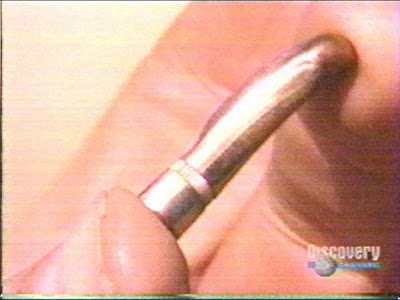
Exhibit L. Test bullet from the Discovery Channel reconstruction
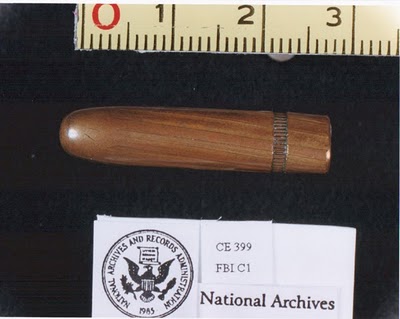 >
>
Exhibit M. Commission Exhibit No. 399
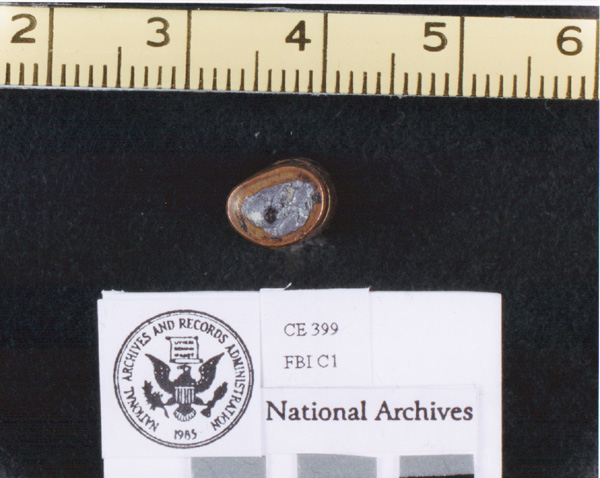 >
>
Exhibit N. Commission Exhibit No. 399
A ballistics study commissioned in 2013 for the PBS program, NOVA: Cold Case JFK, confirmed yet again that the condition of CE 399 is entirely consistent with the nature of the ammunition in question and the wounds the bullet inflicted. Click here, here,
or
here
to watch the NOVA program online. Click here to read a detailed account of the findings.
In fact, one of the closest eyewitnesses to the assassination, Charles Brehm, had no doubt whatsoever about the validity of the Single Bullet Theory.
Brehm told researcher Larry A. Sneed:
The people were running helter-skelter here and there. They were running up to the top of that hill it seemed to me in almost sheep-like fashion following somebody up those steps. There was a policeman who ran up those steps also. Apparently people thought that he was chasing something, which he certainly wasn't. There were no shots from that area, but some of the people followed him anyway.
In the meantime, I became surrounded with newspeople from the two buses. They selected me to talk. In that group, I was telling them that there were rifle shots and that they came from up in the corner of the School Book Depository or up in the corner of the building across from it. One of them asked how I knew they were rifle shots; was I ever in the Army? And I slid the jacket up and showed them my damaged arm here from bullet wounds and told them that I had been in the Ranger battalions. I had been in Europe from early morning on D-Day till September 16th when I was wounded, had seen considerable combat, that there had been a lot of rifle-firing around me and that it wasn't a matter of figuring it out; it was a matter of second nature that the rifle shots came from that area up there. . . .
Because the car was a short distance beyond me when it happened and it was moving away, I heard nothing from inside the car. I have to say this: I had tunnel vision at that time. I had never seen a President of the United States. I would not make a very good witness as to what Mrs. Kennedy was wearing or how and when Governor Connally was hit because I was concentrating on the President. He was the center of my attention. That night, when I finally got to the club I was going to, people asked me how in the world Connally could have gotten hurt. Within hours after the knowledge was given to me that Connally was also wounded, I said the only thing that I could think of was that a bullet that went through the President had also obviously hit Connally because there were only three shots fired; one went wild and two hit the President. The question was how could it have happened? At that time, it was very easy for me to open up my shirt and show the bullet wound in what was the solar plexus, to come over here and show the exit wound where it passed through my body and came out between my ribs; then the second part of the bullet, the damage, because the bullet was softened and out of shape, tore my arm apart.
One bullet did that to me! Any questions that night about what a single bullet can do, my God, I was living proof of it that day! . . .
There is something else I want to mention. Since I have a history of using firearms, people have asked me what my opinion was regarding the ability to fire those shots. I have no doubt in my mind that almost anybody who had basic training like I had in the Ranger battalions would have no difficulty at all. And especially the fellow [Oswald] was in the Marines, who are ordinarily crackerjack people with firearms, would have no problem at all. And I understand that he had a full sling which actually melds the rifle to your body. You become one so that your re-aiming is not necessary. You have the rifle in your arms in the same position. So there's no doubt in my mind that he could have gotten off those shots. . . .(17)
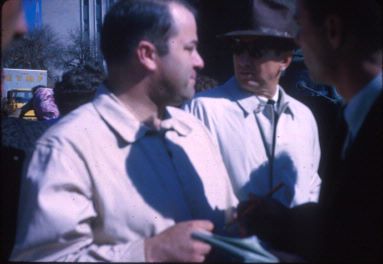
Charles Brehm on November 22, 1963
Returning to Kevin Costner's monologue in JFK:
The Army Wound Ballistics experts at Edgewood Arsenal fired some comparison bullets and not one of them looked anything like this one.
Take a look at CE 856, an identical bullet fired through the wrist of a human cadaver -- just one of the bones smashed by the magic bullet.
Oliver Stone is correct here; the tests conducted on behalf of the Warren Commission were ill-informed and inaccurate.
Dr. John K. Lattimer independently conducted a series of tests stringently simulating the velocity of the bullet for each separate bullet strike, the trajectory of each flight path, and the obstructive force of each wound. The results verify that the condition of the recovered bullet is absolutely consistent with the conditions present in Dealey Plaza.
Yet the government says it can prove this with some fancy physics in a nuclear laboratory. Of course they can. Theoretical physics can prove an elephant can hang from a cliff with its tail tied to a daisy, but use your eyes -- your common sense . . .
What the screenwriters are talking about is a forensic science called Neutron Activation Analysis (NAA), which has been used to determine whether one or more fragments originated in similar bullets or even the exact same bullet. The probative value of NAA is controversial, but the anti-intellectual tone of Stone's argument is disappointing. Interested readers are encouraged to consult some of the most recent research in support of, opposed to, and counterarguments to the opposition of NAA's support of the theory that Lee Harvey Oswald's rifle alone fired the bullet and bullet fragments recovered from the assassination.
Seven wounds, skin, bone.
Researcher John Cahill, a veteran sportsman and gun aficionado, writes, "The long, heavy 6.5 [Mannlicher-Carcano] has often been described as a ballistic overachiever, with 'killing power' far greater than one its paper ballistics would indicate, and greater than one would think, given its diminutive size and modest velocity."(18)
Cahill also notes that the type of ammunition used for the assassination was favored by turn-of-the-century elephant hunters.(19) Any bullet capable of penetrating elephant hide can be expected to inflict considerable damage upon a human being without suffering excessive mutilation of its own.
. . . This single bullet explanation is the foundation of the Warren Commission's claim of a lone assassin. And once you conclude the magic bullet could not create all seven of those wounds, you have to conclude there was a fourth shot and a second rifleman. And if there was a second rifleman, there had to be a conspiracy.
False.
The Warren Report states:
Although it is not necessary to any essential findings of the Commission to determine just which shot hit Governor Connally, there is very persuasive evidence from the experts to indicate that the same bullet which pierced the President's throat also caused Governor Connally's wounds.(20)
The case for the Single Bullet Theory has only grown stronger over the years; but it is inaccurate to suggest that the case for a single gunman is dependent upon the hypothesis.
Three further points:
The elliptical or ovoid shape of Governor Connally's back wound indicates that it had been tumbling when it struck the Governor; this could only be a result of having struck something in between the rifle and the Governor. What was in between the rifle and John B. Connally? President John F. Kennedy was.(21)
The bullet that entered the President's back was not found in his body at the autopsy. Neither a bullet nor any damage from a bullet was found in the limousine. If a shot entered JFK's back, exited his throat, and did not strike Governor Connally, where did it go?(22)
Also, the amount of damage inflicted upon Connally's wrist and thigh indicates that its energy had been "partially expended elsewhere" -- not merely on the Governor's chest wound, expert testimony indicates, but also on the President's neck.(23)
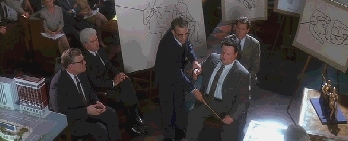
"That's some bullet."
Is the Single Bullet Theory a fantasy, as Oliver Stone would have us believe? Or does it flow from the physical evidence of the John F. Kennedy assassination, and has it been repeatedly confirmed in four decades of tests derived from the latest technological advances? And if it is not necessary to the lone assassin theory, what then becomes of Oliver Stone's argument, regardless of whether the theory is correct?
The reader is urged to consult the evidence and formulate an independent conclusion based on all the facts.
Click here for more information on
Dale Myers, Secrets of a Homicide
Click here for more information on Failure Analysis
Associates's computer modeling of the assassination
Click here for Professor Kenneth Rahn's menu of arguments
for and against the Single Bullet Theory
Click here for information at Professor John McAdams's
Kennedy Assassination Home Page
Click here for a detailed analysis of the Single Bullet Theory by researcher Vincent Van
NOTES:
1. Actor Wayne Knight's participation in this scene may have sparked a memorable parody of Costner's demonstration in an episode of Seinfeld. Click here or here to view it on YouTube.
2. Oliver Stone and Zachary Sklar, JFK: The Book of the Film (New York: Applause, 1992), pp. 152-53. All quotations are from the shooting script and may vary slightly from the finished motion picture.
3. HSCA Hearings Volume 6, p. 43.
4. HSCA Hearings Volume 1, p. 377.
5. HSCA Hearings Volume 1, p. 377.
6. HSCA Hearings Volume 7, p. 100.
7. See for example Josiah Thompson, Six Seconds in Dallas (New York: Bernard Geis Associates, 1967), p. 71.
8. For further analysis of JFK's movements at this instant, click here.
9. Despite his badly injured wrist, Connally would continue to hold onto his Stetson hat throughout the entire shooting. Oliver Stone implies this is impossible, but, as researcher John McAdams has noted, men with considerably more severe injuries than Governor Connally's can hold onto objects. Hawaii Senator Daniel K. Inouye has described such an incident while relating how he lost his arm in combat:
At last I was close enough to pull the pin on my last grenade. And as I drew my arm back, all in a flash of light and dark I saw him, that faceless German, like a strip of motion picture film running through a projector that's gone berserk. One instant he was standing waist-high in the bunker, and the next he was aiming a rifle grenade at my face from a range of ten yards. And even as I cocked my arm to throw, he fired and his rifle grenade smashed into my right elbow and exploded and all but tore my arm off. I looked at it, stunned and unbelieving. It dangled there by a few bloody shreds of tissue, my grenade still clenched in a fist that suddenly didn't belong to me anymore . . ." (Daniel K. Inouye with Lawrence Elliott, Journey to Washington, [New York: Prentice-Hall, 1967], pp. 151-152.)
10. American Bar Association Mock Trial, U.S. vs. Lee Harvey Oswald, Court TV, 1992.
11.
The Secret KGB JFK Assassination Files, DVD, 1998.
12. Unsolved History: JFK - Beyond the Magic Bullet, Discovery Channel, DVD, 2007.
13.
Dale Myers, Secrets of a Homicide.
14. Robert J. Groden and Harrison Edward Livingstone, High Treason (New York: Berkley Books, 1990), unnumbered page in photo insert.
15. HSCA Hearings Volume 1, pp. 376-78.
In testimony before the HSCA, Wecht declared that "for the past 12 or 13 years, I have repeatedly, limited to the context of the forensic pathologist, numerous times implored, beseeched, urged, in writing, orally, privately, collectively, my colleagues; to come up with one bullet, that has done this."
As researcher Fred Litwin notes at the Kennedy Assassination Home Page,
Michael Kurtz, in his book Crime of the Century, has unearthed such a bullet. He states that "A shooting incident occurred in Tangipahoa Parish, Louisiana, in June 1976, an incident which strongly reinforces the Warren Commission's claims about Bullet 399. A man was shot with a .25 caliber copper-jacketed bullet. The bullet penetrated through his wrist and caused a compound fracture of the right radius. The bullet entered the victim's chest, breaking his right sixth rib, and was deflected upward and backward until it smashed against the man's clavicle, severely fracturing it. The bullet then was deflected downward along the spinal column and broke four different vertebrae before finally coming to rest in the neural canal. This bullet caused far more severe damage to bone structure than Bullet 399 allegedly did to Governor Connally. Yet its copper jacketing is intact, and no more than .7 grains of lead are missing from its base. This case belies the assertions by such Warren Commission critics as Milton Helpern and Cyril Wecht that bullet cannot strike bone and emerge unscathed" (p. 81). In addition, Robert Artwohl wrote on CompuServe on 25 March, 1994 that "Martin Fackler, MD, FACS, current head of the International Wound Ballistics Association, and unquestionably one of the leading wounds ballistics experts in the world has absolutely no problem with the SBT with CE 399. In fact, he was able to fire a full metal copper jacket round nosed 6.5 bullet through a radius, fracturing it, without the bullet suffering any damage whatsoever. Vincent DiMaio, M.D., Ph.D., author of Gunshot Wounds: Practical Aspects of Firearms, Ballistics, and Forensic Techniques, has no problem with the SBT and CE 399. In fact, he has recovered completely undeformed unjacketed lead .22 bullets embedded in vertebral bodies."
16. Unsolved History: JFK - Beyond the Magic Bullet, Discovery Channel, DVD, 2007.
17. Larry A. Sneed, No More Silence (Dallas: Three Forks, 1998), pp. 62-65.
18. John Cahill, e-mail to author, October 21, 2001. Cahill is a competitive shooter and former hunter who describes himself as a pacifist and a reluctant member of the National Rifle Association, with which he has earned a rating of Expert. He is a longtime collector of firearms, particularly military weapons of German manufacture, and is a member of the Northern Virginia Gun Collector's Association. He owns three 91/38 6.5 Mannlicher-Carcanos -- the Short Rifle, a T. S. Carbine, and a Cavalry Carbine -- and considers them "solid, dependable, accurate military firearms."
Consider also this passage from Henry S. Bloomgarden, The Gun: A “Biography” of the Gun That Killed John F. Kennedy (New York: Grossman Publishers, 1975), pp. 26-28:
Model 91 has many parts, but is well made and well assembled into a sturdy weapon considered very effective, especially when used at relatively short ranges -- not over 300 meters. The maximum range is 2800 meters, about 3100 yards, or roughly three football-field lengths shy of two miles. It is considered very solid, very serviceable, well designed for rugged military action, trouble free, and, in the hands of a good marksman, very accurate. In fact, its caliber and accuracy have caused some to regard the Carcano as umanitario -- humanitarian. Unlike so many automatic weapons of larger caliber, the 91s, including C2766, fire a bullet of modest size, and each shot could be aimed.
A lieutenant in the Argyll and Sutherland Highlanders described an experience that happened late in 1942, toward the end of the British Eighth Army’s campaign against Italian and German forces in North Africa.
“Strangely enough, it all happened so quickly. There was this long line of the enemy coming in to surrender. I remember thinking how dirty and unkempt they were, and how ill-fitting their uniforms. Odd, how one thinks of things like that at such a time.
“To my left and behind me some of the NCOs were rounding up prisoners and getting them into some sort of formation. I waved my pistol at the men in front with their hands up as a sign to them to join the others.
“Suddenly, one young German -- he couldn’t have been more than sixteen -- decided to run for it. He must have been crazy, you know, to think he could escape . . .
“I shouted for the boy to stop, but, although I knew the word in German, halt, didn’t think to use it. One of the NCOs dashed over to a pile of Italian Carcanos, just given up. He had only his pistol. He picked up a rifle -- I didn’t imagine it was still loaded, but then, we were not all that careful all of the time.
“The German must have been a bloody seventy-five meters or so down the road when the NCO dropped to his knee, took aim, and fired. The boy fell. We went out there and picked him up. The bullet had passed through his back and out his shoulder. If it had been an automatic weapon the best the boy could have had would be a large entry hole and a jagged, horrible tear on the exit side. Dashed brutal size some of those automatics -- knock out a tank if you please.
“The boy was still alive. We brought him to a field hospital and they patched him up. Ten days or so later I saw him, on a stretcher, but propped up, don’t you know, being transferred to another place for prisoners. He obviously was getting better. You could see it by the smiles he gave to other German prisoners, and by the gestures of his arms. Almost like a parson after Sunday service.”
The lieutenant hesitated a moment, then continued. “I took a look at that rifle. I was amazed it had brought the boy down. After all, the weapon was new to the NCO, but it clearly was simple enough to operate and damned accurate. It did its job, all right. Let him hit that boy where he wanted, just enough to do him partially in. Good shot, that NCO. The Carcano, too. Not brand new, but new enough. It was stamped, ‘Made in nineteen-forty.’ Seen some action, too, from the looks of it. Good show, it was. You see, it’s not every rifle permits -- even if you’re good -- to aim in quickly and carefully, to provide an intelligent wound.”
19. John Cahill, newsgroup post of January 4, 2001.
20. Warren Commission Report, p. 19. For example, some conspiracy theorists agree with the House Select Committee's conclusion that JFK was reacting to a bullet wound prior to Zapruder frame 207 (HSCA Report, p. 46; see also HSCA Hearings Vol. VI, p. 16), and many conspiracy theorists (including Oliver Stone) claim that Governor Connally was struck at about Zapruder frame 238. This would not support a theory of two gunmen because Oswald would have had time to fire both of these shots. (It is true that this would leave open the important question of precisely what happened to this hypothetical bullet after it exited the President's throat and missed Governor Connally (see endnote 22), but this is not an issue that seems to trouble conspiracy theorists; see for example Cyril Wecht's testimony at the 1986 London Weekend Television mock trial of Lee Harvey Oswald, or an informal 2007 radio debate between author Vincent Bugliosi and Cyril Wecht.)
21. Warren Commission Hearings, Vol. V, pp. 85-87, 91-93, 95-97.
22. See for example Vincent Bugliosi, Reclaiming History: The Assassination of President John F. Kennedy (New York: W. W. Norton and Co., 2007), pp. 459-60.
23. Warren Commission Hearings, Vol. V, pp. 84-87, 91-93; Vol. VI, p. 102.

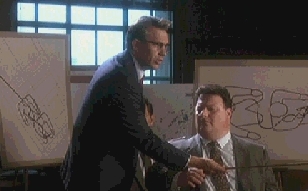

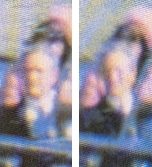
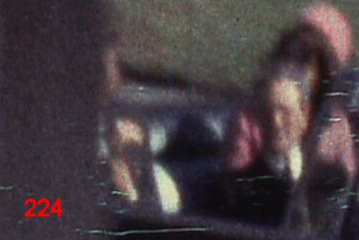
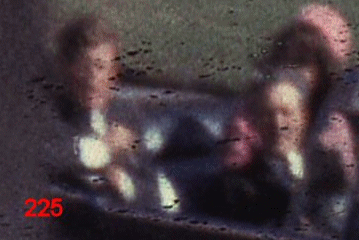
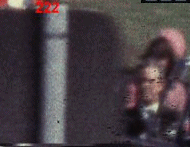

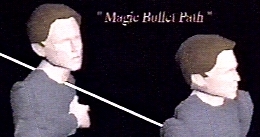
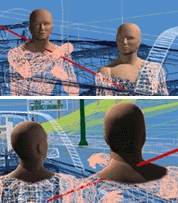
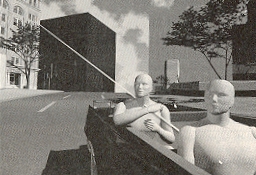
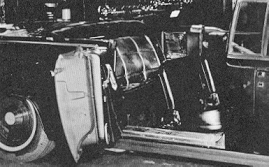


 >
> >
>
